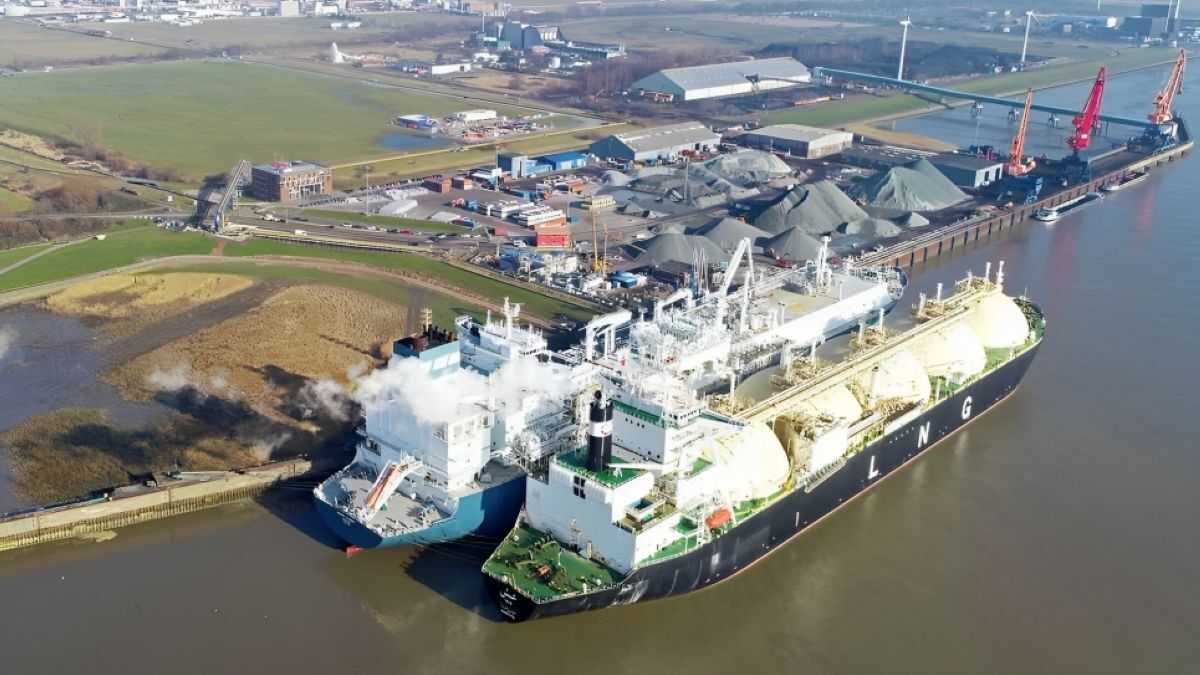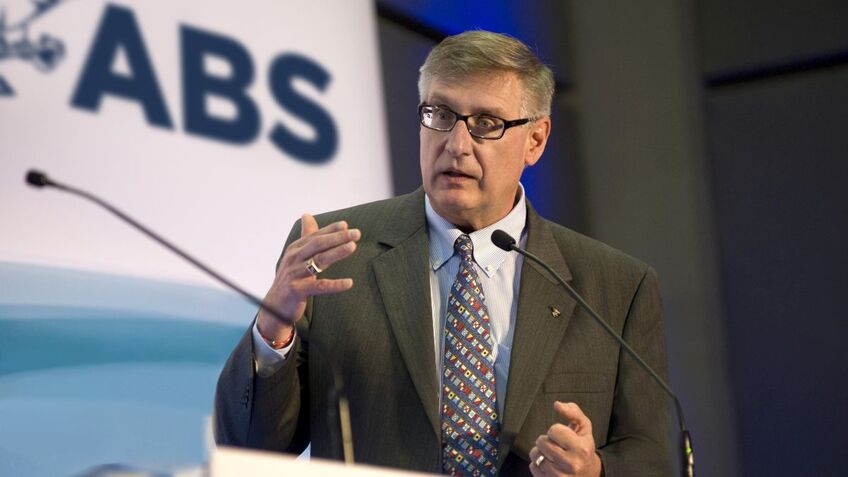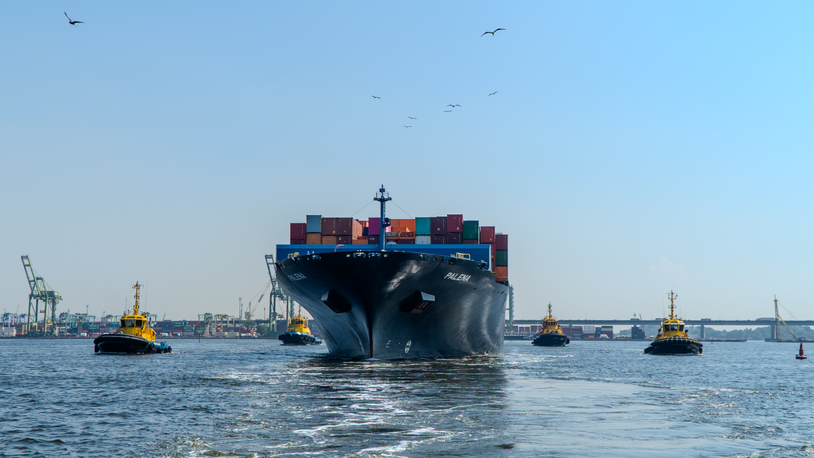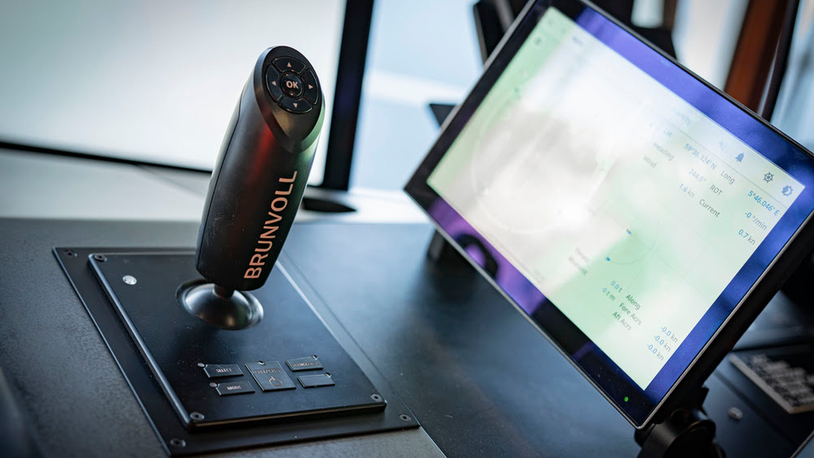Business Sectors
Events
Contents
Advanced drive systems for nuclear submarines
Full electric and hybrid mechanical/electrical propulsion systems are primed to challenge the traditional solution for powering nuclear submarines
Full electric and hybrid mechanical/electrical propulsion systems are primed to challenge the traditional solution for powering nuclear submarines
Conventional submarines are exclusively electrically driven but in nuclear submarines electric propulsion is only used in emergency modes when steam power is lost. In such applications, the electric drive is connected to the propulsion shaft through the gearbox in one of a number of ways, from offset geared to chain drives.
The need for a sufficient amount of torque from the electric propulsion motors would lead to an unacceptable motor size if it were not for the torque-multiplying effects of the gearbox. Moving to a hybrid or full electric propulsion system calls for a very power- and torque-dense motor and converter.
A hybrid system allows the designer to address maximum speed from a more flexible and energy- and space-efficient propulsion plant for most of the submarine’s operating profile. Systems exploiting hybrid solutions are already in service with the Royal Navy on platforms such as the Type 23 frigates which feature combined diesel-electric and gas turbine (CODLAG) configurations.
Such hybrid systems – where an electric drive is used as the primary mode of propulsion – have only been implemented so far on surface ships, with the electric motor directly shaft mounted.
Submarine propulsion plants have historically been designed around a specified maximum speed, at which all the prime movers are operating at or near their optimum fuel efficiency points. When the submarine moves away from that speed the fuel efficiency falls, and at low speeds the vessel becomes relatively fuel inefficient.
Improving the overall fuel efficiency of a nuclear submarine requires an understanding of how much time the vessel spends at different speeds (see Fig. 1) and the effects this has on its fuel economy. One of the options available for improving fuel efficiency is a hybrid propulsion drive.
Propulsion options for nuclear submarines fall into three categories: traditional mechanical, hybrid and full electric solutions.
Mechanical propulsion has been the mainstay of nuclear submarines for some 50 years, the power historically provided by two steam turbines driving into a fixed-train gearbox with a common single-shaft output. Electrical loads are met by twin steam turbo-generators. The overall configuration is illustrated in Fig. 2.
Emergency propulsive power – although various options were tried – was generally assigned to an electric motor, supported by the main battery, feeding into the gearbox to drive the propulsion train with the main steam turbines clutched out.
Over the years this emergency propulsion motor has interfaced with the gearbox in many ways, including offset gearing, belt-and-chain drives and direct shaft mounting. (Main shaft mounting was adopted in earlier submarine classes but not continued due to many operational problems.)
Some suggest that the gearbox should be eliminated, but submarine gearboxes have evolved to become highly efficient and reliable in terms of performance and integration; although large and heavy, they do not place limitations on or introduce major inefficiencies into the propulsion system.
Inefficiencies in the traditional mechanically-driven nuclear submarine are introduced when the main steam turbines - designed for maximum efficiency at their maximum speed - are run at low loads. This is the consequence of a decision made many decades ago.
It is possible to specify efficiency around a lower operating point, but the peak efficiency point could not be matched to the peak of the operating profile. The main engines are capable of providing a continuously variable speed, up to the submarine’s maximum, using the steam throttle valves.
In practice, however, there is a limit to the power available from the nuclear reactor without a change in the secondary plant line-up. This gives the submarine two power states. In the top third of their speed band the main engines operate in the areas of the efficiency curve that exceed those achieved by the turbo-generator sets.
A hybrid electrical and mechanical propulsion solution for a nuclear submarine allows the use of both electrical and traditional methods in meeting the wide range of requirements across the operating profile. Various arrangements can be suggested, ranging from a single motor directly mounted on the shaft to a geared multiple-motor solution.
There are an equally diverse number of power generation options to accompany the propulsion configurations.
The configuration shown in Fig. 3 was chosen because it represents minimal change from the type of propulsion system shown in Fig. 2. It exploits traditional propulsion methods for high speeds, while providing electrical power for the lower speeds where the main steam turbines would be operating at very low efficiencies in a mechanical propulsion system.
Using the main engines to provide power for propulsion at high speed allows the maximum speed of the vessel to be unchanged, thus maximising the high efficiency speed range of the mechanical propulsion system.
Efficiency at low speeds is improved because at such speeds the electric motors provide the propulsive power to allow the main engines to be clutched out. As long as the turbo-generators of a nuclear submarine are sized to provide enough capacity for more than the full electrical power demand, then no additional prime movers will be required.
This is because the maximum electrical power demand co-incides with the submarine’s full power demand from the reactor plant; and this full power demand co-incides with the vessel’s high speed demands.
At lower speeds, where the main engines are inefficient and the hotel load is smaller, the turbo-generators have surplus capacity which could be exploited to provide the propulsion load required in addition to the hotel loads. At low speed, therefore, the main engines can be declutched and the turbo-generators loaded higher in order to deliver both the hotel electrical load and the propulsion load.
As the steam turbo-generators operate at a higher efficiency at this loading than a main turbine at a very slow speed and correspondingly low loading, this significantly improves the overall vessel efficiency at low speeds. (Providing the conversion between electrical and rotating power is performed efficiently.)
As the speed of the vessel increases, the potential benefit of electric motors diminishes. There is a point where the efficiency of the electric propulsion becomes equal to that of the mechanical propulsion; this gives the optimum rating for the motors in a hybrid system.
Emergency propulsion for the submarine can also be provided by the electric propulsion system, the associated motors arranged to drive through the gearbox (Fig. 3). The torque multiplying effects of the gearbox can thereby be used and the motors can be of a smaller physical size.
As in the traditional method, this system transmits all the propulsive power, including emergency propulsion, through the gearbox, which can be considered a single point of possible failure. While this is true, it should be noted that no failure of a Royal Navy submarine gearbox has resulted in loss of propulsion. Faults have been detected during routine gearbox inspections but have not led to any propulsion loss.
Although there exists a single point of failure the probability of such a failure remains incredibly small, to the level where it is dwarfed by possible failures elsewhere in the propulsion train. Electrical or mechanical, a submarine propulsion system still has a single propulsor and shaft arrangement.
Full electric propulsion has long been a vision of many marine engineers, anticipating the benefits of greater operational flexibility and efficiency. Such attractions have seen the technology incorporated in a number of Royal Navy vessels, including the LPDs Albion and Bulwark and the Type 45 destroyers now entering service.
Various configurations can be proposed, ranging from a single-motor direct-drive solution to a four-motor twin-shaft geared solution, as well as two-motor twin-shaft and two tandem-motor single-shaft solutions. An equally diverse number of power generation options are available.
A full electric drive propulsion system for a submarine would feature a motor or motors to provide all propulsive power for the vessel across its complete speed range. Securing power for that speed range would dictate a far greater electrical capacity, although not more than has ever been available on a nuclear submarine.
A possible topology for this arrangement is illustrated in Fig. 4, a single motor on a direct-drive shaft being chosen since the options mentioned earlier are considered more problematic in fitting into a traditional nuclear submarine hull.
Electrical power generation is assigned to three turbo-generators, two of which are similar in size to those used in the previous two topologies and one of larger capacity to provide the additional power required to attain the vessel’s maximum speed.
This would lead to a situation where the larger turbo-generator could only be exploited fully when the submarine is in the full power reactor state. The two smaller turbo-generators and motor will then deliver enough propulsive power to attain speeds up to that requiring the full power state, in a similar manner to the hybrid solution.
The envisaged motor would be required to provide the full torque necessary for propulsion as there is no need for a gearbox in this topology. Removing the gearbox and main steam turbines frees up considerable space for installing a motor and its associated drive system as well as the additional suitably-rated turbo-generator set.
Emergency propulsion would be provided by the same motor used for primary propulsion, albeit with a lower phase number in operation, basing the emergency performance on the degradation of the motor and converter combination. When the submarine operates at lower speeds it may become more efficient to run the main propulsion motor with a lower phase number, purposely derating the motor in order to improve the efficiency of the propulsion train.
The single point of failure in this arrangement would be the bearings which support the rotational movement; the number of these elements, however, would be reduced compared with systems incorporating a gearbox.
Hybrid submarine propulsion technology uses much of the mechanical propulsion equipment (turbines, gearbox and turbo-generators) available at the required rating sizes. A power-dense electric motor is dictated, and suitable highly power-dense converters and motors are in an advanced state of development.
Studies by BAE Systems and Ultra Electronics PMES suggest that hybrid propulsion promises further opportunities for efficiency savings. Removing the astern steam turbine from the main engines, for example, would foster increased efficiency from the ahead turbines. Another benefit – the ability to use the motors as generators – increases the survivability options since the hybrid propulsion motors can be applied for regenerative braking and as a main shaft-driven electrical power source.
While the technology for an electrically-propelled or conventionally powered submarine is available and proven, questions remain over the equipment required for a full electric propulsion nuclear vessel. The propulsion motor technology for an electric installation would likely be based around the advanced induction motor specified for the Type 45 destroyers.
Such motors currently operate at a much higher voltage than has traditionally been available on a Royal Navy nuclear submarine. Either the development of a new motor controller to operate at the present onboard voltage levels would be required or the electrical distribution system of the submarine would have to be completely changed from current practice.
A change in the generating voltage would then introduce additional converters in order to reduce the system voltage for the hotel loads. If the topology remained similar then the current levels required to power a propulsion motor would become excessively large. Any space or weight savings achieved would be used to install the additional electrical connections and protection devices.
For full electric propulsion to become reality on the nuclear submarine there is also a need for a larger turbo-generator than is currently available for submarine applications.
Hybrid propulsion configurations allow the system design to match individual requirements to different machines in achieving the optimum overall system. With the wide variety of operating profiles specified across the shipping and naval sectors, it is clear there is no ‘one size fits all’ solution for specifying the appropriate propulsion architecture.
There are significant potential benefits in challenging the traditional method of nuclear submarine propulsion; these are mainly due to the way in which the operating profile of such a vessel differs so greatly from the maximum speed they are generally required to achieve.
Full electric propulsion will make a nuclear submarine more efficient than the purely steam-driven vessels currently in service, but there remain areas of technology where much development work is required before consideration for future submarine architectures.
The technology required to introduce hybrid propulsion into nuclear submarines, however, is now sufficiently mature for the concept to be considered a serious option for application at the earliest opportunity. MP
Related to this Story
Events
Maritime Environmental Protection Webinar Week
Cyber & Vessel Security Webinar Week
The illusion of safety: what we're getting wrong about crews, tech, and fatigue
Responsible Ship Recycling Forum 2025
© 2024 Riviera Maritime Media Ltd.













